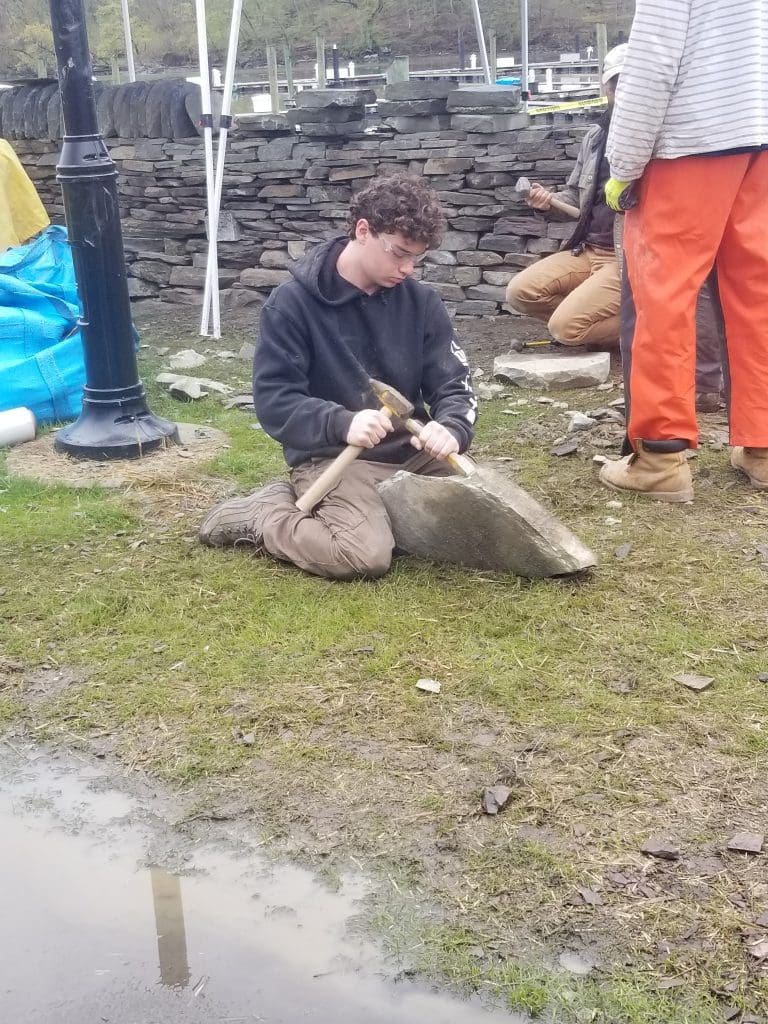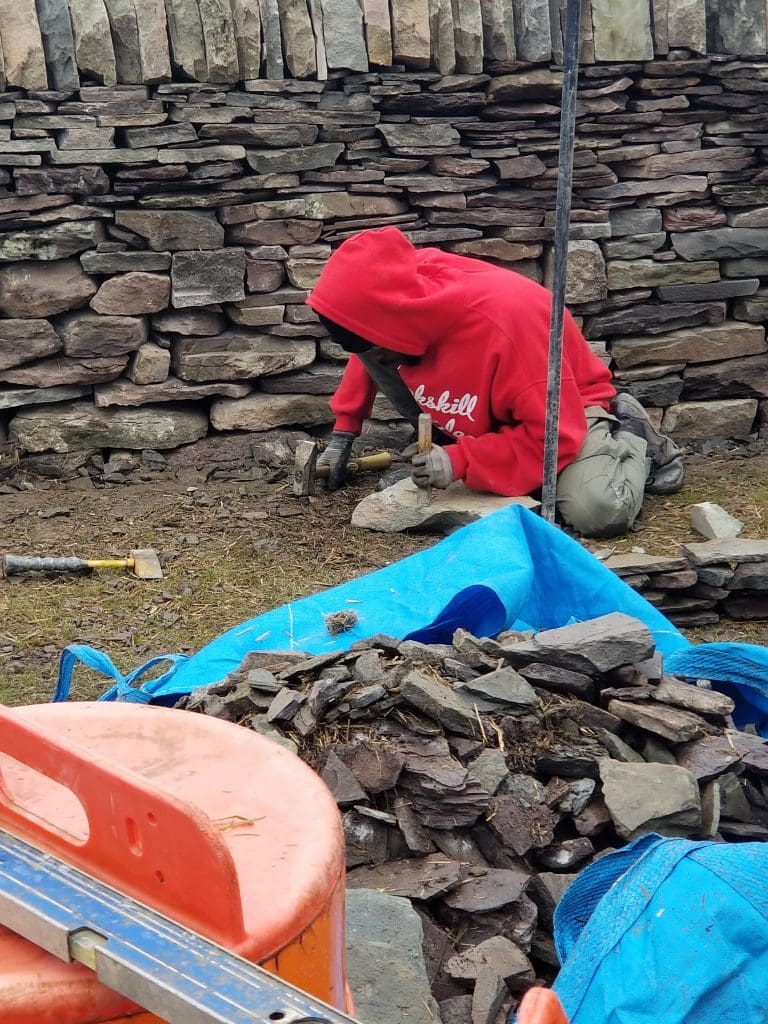
Dry stone walling originated in England and requires considerable skill as these walls do not use mortar. The nonprofit Stone Trust provides workshops to preserve and advance the art and craft of dry stone walling.
Back in 2019, Chappy Manzer, owner of Manzer’s Landscape Design and Development, Inc., based in Peekskill, New York, and several of his crew members attended one of the Stone Trust’s Contractors’ Introduction to Dry Stone Walling workshops. They learned the five basic rules of building a dry stone wall.
Manzer thought it was a good team-building exercise that also educated his employees on a unique masonry technique. He wanted to have another training event that would be open to both professional landscapers/hardscapers and local youth. However, due to travel restrictions from the pandemic, they weren’t able to host an event until this May.

Manzer says he invited high school students and students from their local trade school to participate in hopes the workshop would interest them in the landscape industry.
“We went to two or three different classes and spoke to them about the opportunity,” Manzer says. “I have a pretty good relationship with the guidance department at the high school in the city that we live in.”
Lou Lanza, the Lanza Family Foundation, an organization called Hope for Youth, the Peekskill Rotary Club and the Charles Point Marina, where the wall was built, made donations for the workshop.
“Everybody chipped in to help these kids because not everybody needs to be a lawyer, a doctor, an accountant,” Manzer says. “There’s plenty of jobs for people who want to work with their hands whether it’s a mason or an electrician or a landscaper.”
Manzer ended up having four of his employees, as well as five professionals from other companies, join him and five high school students for the workshop that took place over three days. For the beginners, the instructors worked with them on building the faces of a double-faced wall.
Meanwhile, the crew members who had attended the previous workshop worked on the four vertical wall ends that finished the pair of walls. Manzer admits that this was more of a complicated project than should have been done with beginners.

The Stone Trust normally teaches how to build a dry stone wall by working with the group to take a wall apart and build it back better, not starting from scratch. Despite this challenge, the instructors were able to teach two levels of walling and complete this complex build from the ground up in a public space.
For the five students who participated, Manzer says they were exhausted but really enjoyed it and liked seeing something come from nothing. He adds the end product is beautiful and features old-world creativity.
“I think everyone wants stuff that’s quick and easy,” Manzer says. “You have concrete walls that look like stone. It’s about efficiency and making money. Some of the artistry and creativity that goes with a dry stone wall or arch is lost. We’re just trying to keep it alive.”
Manzer says two of his employees also enjoyed the work and one wants to get certified. Participation in Stone Trust’s workshops provides preparation for the Dry Stone Walling Association of Great Britain (DSWA-GB) certification test. Manzer says if one of his employees becomes Level 2 certified he’d be the only bilingual instructor in the country.

“Not a lot of people do this anymore so it’s valuable,” Manzer says. “Not only are we trying to make the employees better at work, but we’re also trying to make them better in their lives as well and create different opportunities for them.”
For landscapers not familiar with DSWA-GB standards, participation in the workshops provides the opportunity to learn how to build much stronger walls at faster rates.
Manzer says he wants to do more hands-on events like this in the future to show students there is more to landscaping than just mowing the grass.

